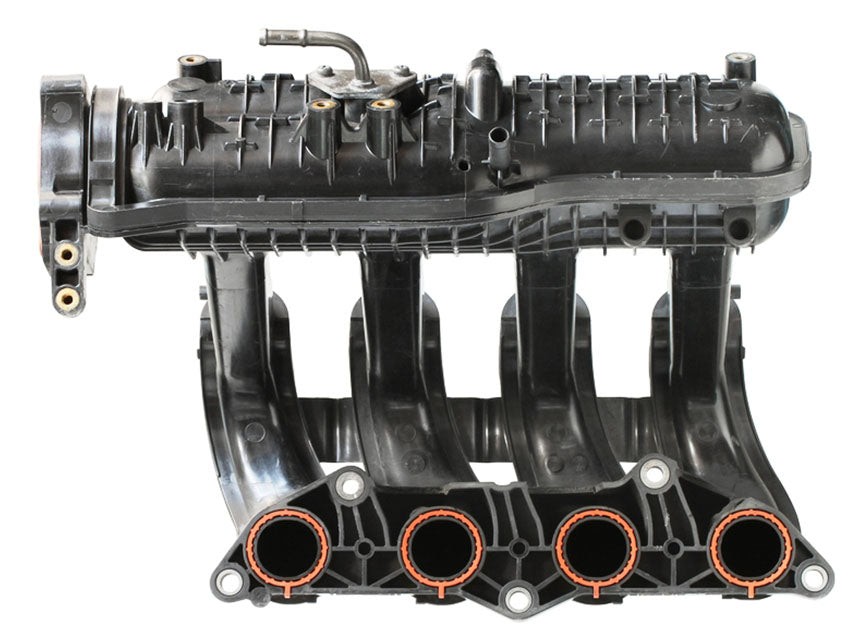The intake manifold, often referred to as the inlet manifold, is a crucial component within your car’s engine system. As a key part of your Car Intake Parts, its primary function is to evenly distribute air to each of the engine’s cylinders. In many modern vehicles, the intake manifold also serves as the mounting point for the fuel injectors. For older vehicles, particularly those predating fuel injection or equipped with throttle body injection, the manifold is responsible for channeling the pre-mixed fuel and air from the carburetor or throttle body directly to the cylinder heads.
During the engine’s intake stroke, the manifold facilitates the entry of air into the combustion chamber. This air is then precisely mixed with fuel from the injector, initiating the combustion cycle that powers your vehicle. The air’s journey to the manifold begins at the air cleaner assembly, housing the vital air filter.
The air filter is an essential car intake part designed to prevent dust, debris, and other contaminants from entering the engine and causing damage. Regular replacement of the air filter is therefore crucial for maintaining engine health and performance.
 Close-up of a typical four-cylinder engine intake manifold, highlighting its runners and overall structure
Close-up of a typical four-cylinder engine intake manifold, highlighting its runners and overall structure
Intake manifolds are commonly constructed from materials like aluminum or cast iron, chosen for their durability and heat resistance. However, to reduce weight and production costs, some manufacturers utilize plastic manifolds in certain car models.
While generally robust, intake manifolds are not immune to issues. One common problem is the development of cracks or splits, leading to vacuum leaks. A telltale sign of an intake manifold leak is often a distinct whistling or hissing sound emanating from the engine bay, particularly noticeable when the engine is idling. Accompanying symptoms may include a rough idle or even engine stalling at idle speeds.
Minor splits in an intake manifold can sometimes be repaired. However, due to the stresses manifolds endure and the importance of a perfect seal, complete replacement is generally the recommended and more reliable solution.
Replacing an intake manifold on many contemporary cars is a relatively straightforward process, thanks to the ready availability of replacement car intake parts. Sourcing parts for older vehicle models can present a greater challenge. In such cases, you may need to explore alternative sources like auto scrapyards, junkyards, online marketplaces such as eBay, or specialized classic car parts suppliers to locate a compatible intake manifold.
In some instances, particularly with very rare or old vehicles, direct replacement intake manifolds may no longer be manufactured. When faced with this situation, owners may need to consider extensive repair of the original manifold or seek out specialist engineering services capable of fabricating a custom replacement. It’s important to note that custom fabrication can be a significantly more expensive option.
While overall intake manifold problems are not exceedingly common, certain diesel engine models are known to incorporate swirl flaps within their manifolds, positioned upstream of the intake ports. Swirl flaps are designed to optimize air flow characteristics at lower engine speeds, enhancing fuel efficiency and reducing emissions. However, these flaps are prone to becoming clogged with carbon deposits from the exhaust gas recirculation (EGR) system. This fouling can cause the swirl flaps to stick in a fixed position or, more seriously, to break off entirely. If detached swirl flaps are ingested into the engine cylinders, they can cause catastrophic internal engine damage, necessitating major and costly repairs. Therefore, regular inspection and maintenance of diesel intake manifolds with swirl flaps are crucial preventative measures.